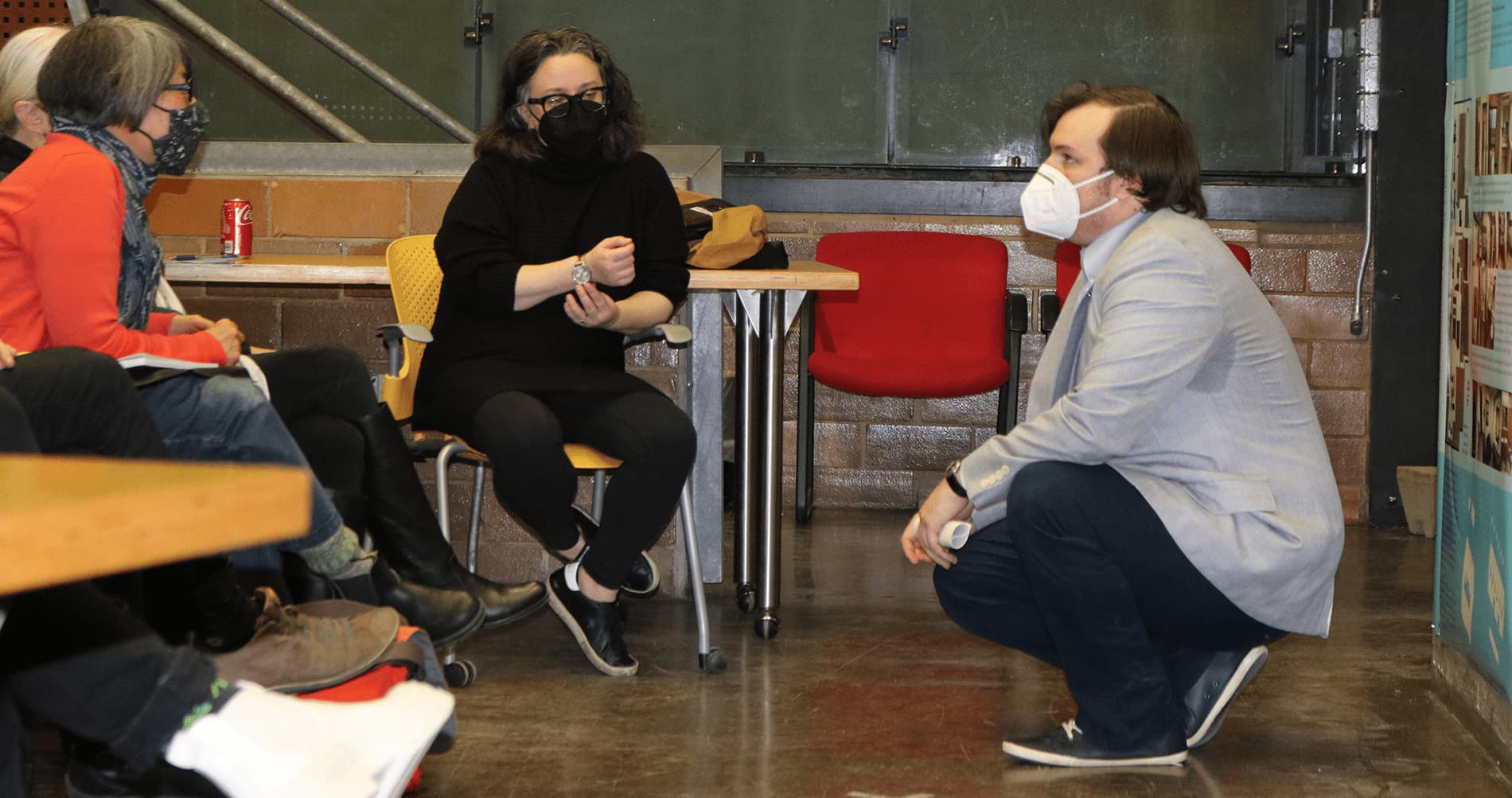Class of ’22: Architecture grad follows a dream to build a better world

To mark the graduation of the Class of 2022, Marketing & Communications is profiling several students who were nominated by staff and faculty for their contributions to the University and their potential to make a difference after graduation. For more information about 2022 commencement exercises, please click here.
Joseph Silveira has always been interested in what makes buildings special; in fact, it’s what brought him to Detroit Mercy.
After studying engineering at various colleges and universities from Michigan to Florida, Silveira left that discipline to earn a master’s degree in Architecture at Detroit Mercy’s School of Architecture & Community Design (SACD). It was not an easy decision.
“There was a very difficult moment where I spent the whole day thinking about a specific building. It was then when I realized I couldn’t keep doing engineering while having whimsical, dreamy thoughts about buildings,” Silveira said.
Silveira was introduced to architecture while working on his undergraduate degree in Florida, but chose to attend Detroit Mercy for its community-oriented approach to architecture.
“Despite architecture being a fairly uniform practice, each school has a pedagogy,” Silveira said. “Detroit Mercy is aimed toward public interest design, which focuses on the stakeholders, rather than the new-urbanism taught at other universities that is aimed toward pleasing a client.”
What interested Silveira when he came to study at Detroit Mercy was designing “from a perspective of sympathy, and understanding of the building’s users rather than the building’s owners.”
He also felt supported in exploring these topics by the faculty at Detroit Mercy. He said they were always around to answer questions, or explore new and exciting architectural concepts.
“It’s one of those things where you get these really wonderful faculty members who get as excited as you about the subject matter,” Silveira said. “And you don’t feel as if you are bothering them by asking questions or starting a tangential conversation.”.
He said that he did not experience the anxiety and burn out at Detroit Mercy that he experienced at other times in his education, and credits that to the connections he and his classmates have with the faculty at their school.
“I always felt like I was on pins and needles at my other programs,” he said. “There was more anxiety on projects and more burnout. One thing about Detroit Mercy is that the faculty members are going to see you as a real human being.”
Silveira said he felt supported by his professors to dive into unique topics he would not necessarily have been able to at other programs. He enjoyed sharing his passion for architecture with Professor of Architecture Allegra Pitera, whose history and theory classes pushed him to consider how a building evokes moods and feelings.
“Many students get into a bind with materials and realistic objectives, but don’t think about emotional feelings as an objective. I like that her thinking doesn’t fit into these pedagogical norms,” Silveira said. “I also liked exploring ideas with Professor Wladek Fuchs. He’s definitely a guy you can sit down and talk with, and he gives you a lot of freedom to do your own thing.”
Silveira also connected with Associate Professor Erika Lindsay, whose classes on memory helped him think differently about the impact society has with regard to decay and erosion of buildings, and the “collective memory of a space.”
He was also impressed with how involved the master’s students were in the undergraduate program. As a master’s student he was asked to participate in undergraduate critiques, something that would not happen at most programs. Silveira feels that bringing the undergraduate and master’s level programs together fosters community within the college.
Seeking a way to become more involved with the student body, Silveira worked with Dichotomy, the SACD’s academic journal. He first encountered as an undergraduate, and found it interesting. He joined the magazine to improve his writing skills while preparing to draft his thesis.
“When I picked it up, it was about the execution of a journal that was started but not finished due to the COVID pandemic,” he said. “COVID made it very difficult. We had to basically restart.”
Silveira worked with a smaller-than-normal staff to complete the issue and enjoyed the work and the opportunity to learn about “the nature of what it takes to publish, and work through a student publication.”
All this has helped shape Silveira as an architect and his search for employment, he said.
“Architecture should exist as a common good practice,” he said, adding that he was inspired by the Detroit Collaborative Design Center (DCDC), a nationally award-winning practice that puts the community at the center of design.
“I think to have a program where the faculty is approachable, and their values are not in line with this corporate scholastic nature, and instead are interested in human experiences and humans in general helped me more forward from my other programs,” he said. “They’ve helped me become the architect I want to be.”
— By Patrick Bernas. Follow Detroit Mercy on Facebook, Twitter and Instagram. Have a story idea? Let us know by submitting your idea.
